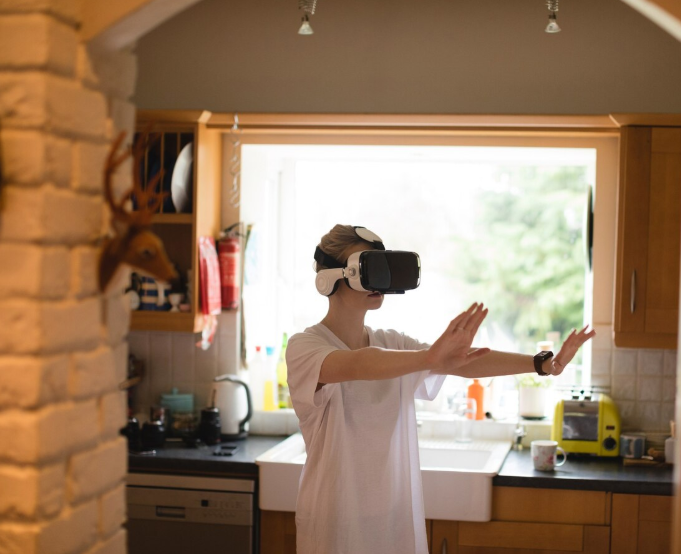Virtual Reality Tourism: Exploring the World Without Leaving Home
Imagine standing atop the Eiffel Tower, exploring the depths of the Amazon rainforest, or walking through the ruins of ancient Rome—all without boarding a plane or stepping out of your home. Virtual Reality (VR) tourism is revolutionizing how we explore the world, offering immersive experiences that bring destinations to life. Whether driven by convenience, affordability, or environmental concerns, VR tourism is reshaping how we satisfy our wanderlust.
What Is Virtual Reality Tourism?
Virtual Reality tourism uses VR technology to simulate real-world travel experiences. By wearing a VR headset, users can explore destinations in 360 degrees, interact with virtual environments, and experience a sense of presence that mimics being physically there. These experiences are often enhanced with high-resolution visuals, spatial audio, and, in some cases, haptic feedback to create a truly immersive journey.
How VR Tourism Works
VR tourism relies on a combination of advanced technologies:
- 360-Degree Videos: Many VR travel experiences are created using 360-degree cameras that capture real locations from every angle.
- 3D Environments: Some VR experiences use computer-generated imagery (CGI) to recreate landmarks, historical sites, or even entirely fictional worlds.
- VR Headsets: Devices like the Oculus Quest, HTC Vive, or PlayStation VR allow users to step into these environments, providing a sense of depth and immersion.
- Interactive Features: Advanced VR platforms let users interact with their environment—such as touching objects, reading information, or navigating freely.
The Benefits of VR Tourism
1. Accessibility and Convenience
VR tourism allows people to explore destinations without the challenges of physical travel. This is particularly beneficial for individuals with mobility issues, time constraints, or limited budgets.
2. Affordability
Traditional travel can be expensive due to airfare, accommodation, and other costs. VR tourism offers a cost-effective alternative, allowing users to visit multiple destinations for the price of a headset and software.
3. Sustainability
With growing concerns about the environmental impact of travel, VR tourism offers a greener alternative. By reducing the need for flights and infrastructure, VR can help minimize carbon emissions and over-tourism in popular destinations.
4. Educational Value
VR tourism provides an opportunity to learn about history, culture, and geography in an engaging way. Virtual visits to museums, historical sites, or natural wonders can be an immersive educational tool for students and curious travelers alike.
5. Safety
In times of global uncertainty, such as pandemics or political instability, VR tourism provides a safe way to explore the world without exposing oneself to potential risks.
Applications of VR Tourism
1. Virtual Travel Experiences
Platforms like Google Earth VR and YouVisit allow users to explore cities, landmarks, and natural wonders. Users can “walk” through Times Square, “fly” over the Grand Canyon, or “dive” into the Great Barrier Reef—all from their living rooms.
2. Cultural Heritage Preservation
VR is being used to recreate historical sites that are endangered or inaccessible. For example, ancient ruins destroyed by conflict or natural disasters can be digitally reconstructed, allowing future generations to explore them virtually.
3. Hotel and Destination Previews
Travel companies and hotels are using VR to offer previews of their properties and destinations. Travelers can virtually walk through a resort, inspect a hotel room, or explore local attractions before booking.
4. Immersive Museum Tours
Many museums are embracing VR to make their collections accessible to a global audience. Institutions like the Louvre and the Smithsonian offer virtual tours that bring art and history to life.
5. Therapeutic Travel
For individuals unable to travel due to age, illness, or disability, VR tourism offers a therapeutic escape. VR experiences have been used in hospitals and care homes to provide patients with calming or stimulating virtual adventures.
Challenges and Limitations
While VR tourism offers incredible potential, it’s not without its challenges:
- Lack of Physical Sensation: VR cannot replicate the tactile and sensory experiences of travel, such as tasting local cuisine, feeling a cool breeze, or interacting with locals.
- High Initial Costs: While VR tourism is more affordable than traditional travel, the cost of high-quality VR headsets can be a barrier for some users.
- Technology Limitations: Current VR technology, though advanced, still has room for improvement in terms of resolution, realism, and motion sickness.
- Cultural Authenticity: VR experiences may oversimplify or fail to capture the true essence of a culture, reducing it to a visually appealing but shallow representation.
The Future of VR Tourism
The potential of VR tourism is vast, and advancements in technology will only make these experiences more realistic and accessible. Here’s what the future may hold:
- Full-Sensory Integration: Innovations in haptic technology, smell simulation, and even temperature control could make VR tourism more immersive.
- Social VR Experiences: Platforms could allow friends and family to explore virtual destinations together, bridging the gap between solitary VR and group travel.
- AI-Powered Guides: Intelligent virtual tour guides could provide personalized insights, answering questions and tailoring experiences to individual preferences.
- Hybrid Travel Models: VR could complement physical travel by allowing people to preview destinations before visiting or relive past trips virtually.
Conclusion
Virtual Reality tourism is transforming the way we explore the world, offering an innovative alternative to traditional travel. While it may never fully replace the experience of being in a new place, VR opens up possibilities for accessibility, education, and sustainability that were previously unimaginable.
As technology continues to evolve, VR tourism has the potential to become a vital part of how we connect with the world, blending convenience and adventure in ways that redefine what it means to travel. Whether as a supplement or a substitute, VR tourism is here to stay—and it’s taking us places we’ve only dreamed of.







